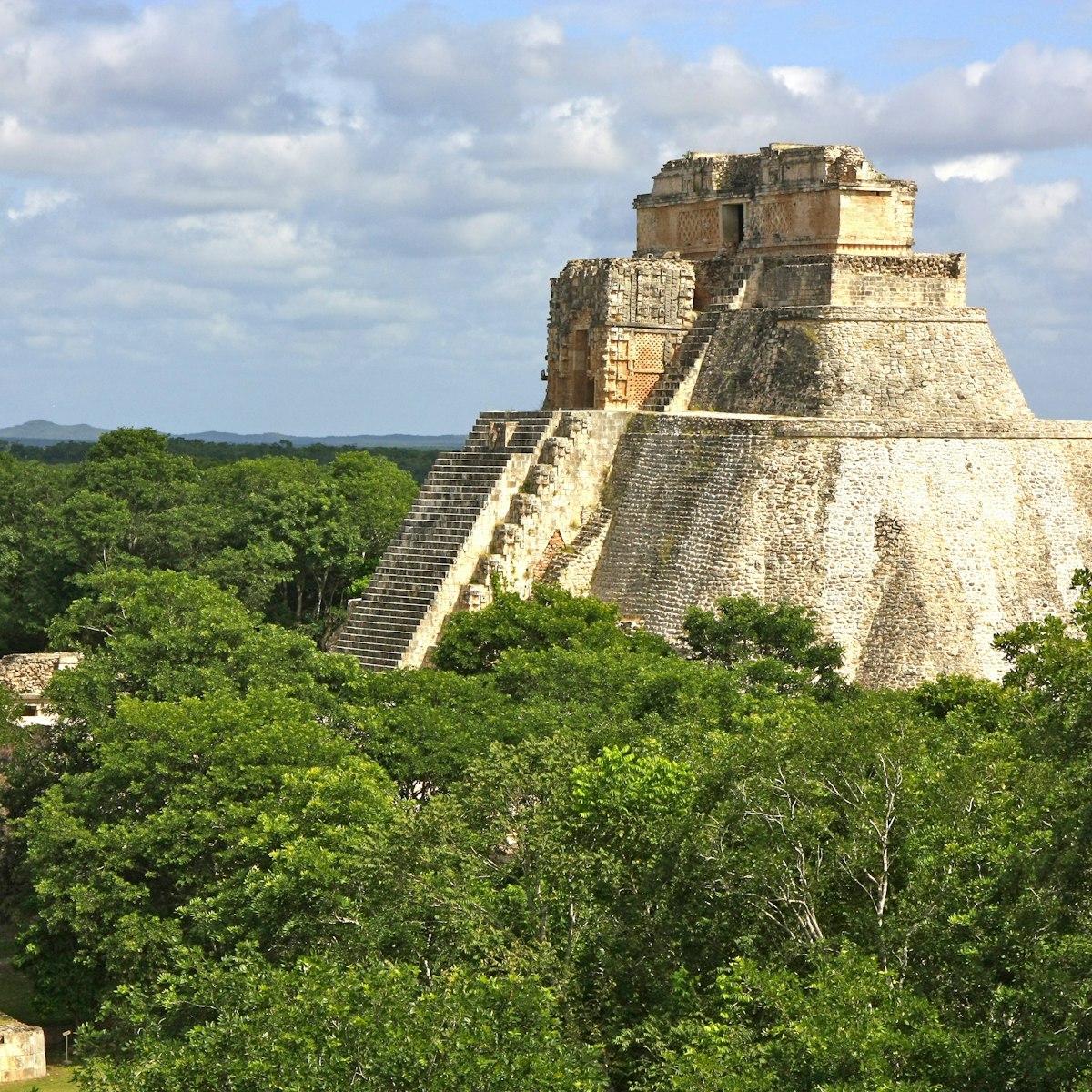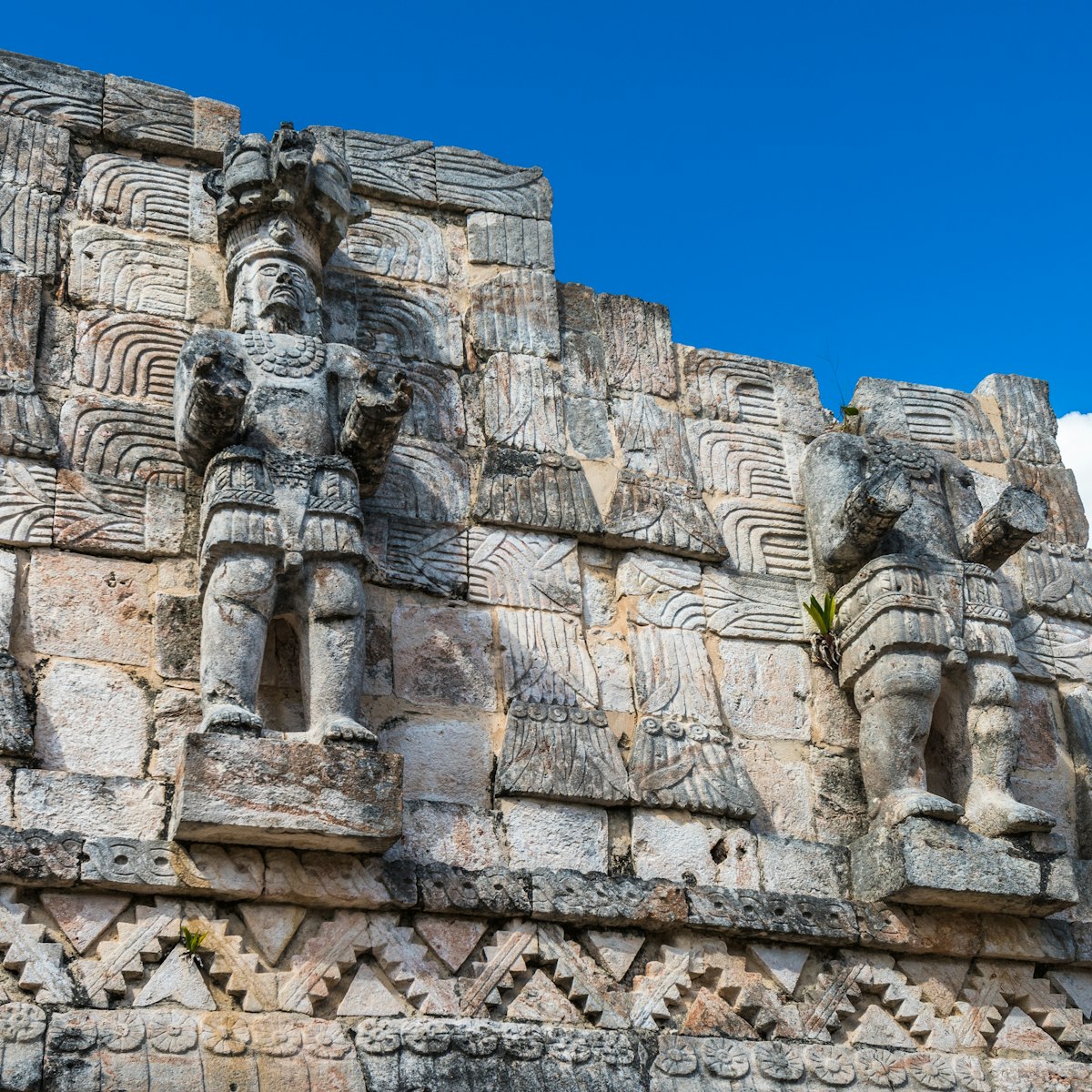This is the Ruta Puuc site not to miss. Archaeologists believe that, at one point in the 9th century, some 3000 Maya lived at Labná. To support such numbers in these arid hills, water was collected in chultunes (cisterns); there were some 60 chultunes in and around the city; several are still visible. El Palacio, the first building you encounter, is one of the longest in the Puuc region, and much of its decorative carving is in good shape.
On the west corner of the main structure’s facade, straight in from the big tree near the center of the complex, is a serpent’s head with a human face peering out from between its jaws, the symbol of the planet Venus. Toward the hill from this is an impressive Chaac mask, and nearby is the lower half of a human figure (possibly a ballplayer) in loincloth and leggings.
The lower level has several more well-preserved Chaac masks, and the upper level contains a large chultun that still holds water. The view of the site and the hills beyond from there is impressive.
Labná is best known for El Arco, a magnificent arch once part of a building that separated two quadrangular courtyards. It now appears to be a gate joining two small plazas. The corbeled structure, 3m wide and 6m high, is well preserved, and the reliefs decorating its upper facade are exuberantly Puuc in style.
Flanking the west side of the arch are carved na with multitiered roofs. Also on these walls, the remains of the building that adjoined the arch, are lattice patterns atop a serpentine design. Archaeologists believe a high roofcomb once sat over the fine arch and its flanking rooms.
Standing on the opposite side of the arch and separated from it by the sacbé is a pyramid known as El Mirador, topped by a temple. The pyramid itself is largely stone rubble. The temple, with its 5m-high roofcomb, is well positioned to be a lookout, hence its name.
Labná is 14km east of the Ruta Puuc junction with Hwy 261.


